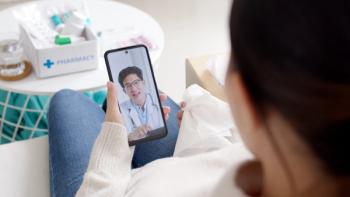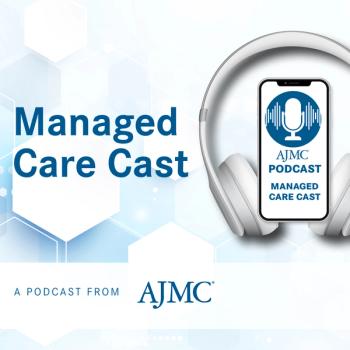
Patient Outcomes Improve on Several Fronts Following Treatment for Prurigo Nodularis
Subanalyses of data from the LIBERTY PN-PRIME and LIBERTY PN-PRIME2 studies illustrate how dupilumab for prurigo nodularis can better patient outcomes, including quality of life and symptom burden.
Statistically significant and clinically meaningful improvements were seen among adult patients who have
The primary end point for PRIME2 was response at week 12, and the primary end point for PRIME was response at week 24. In both trials, background therapy was permitted with low to medium potency topical corticosteroids/topical calcineurin inhibitors or antidepressants if it could be shown these were stable regimens with no expectation of change for the duration of the study; the treatment group received 300-mg dupilumab every 2 weeks for 24 weeks, following a 600-mg loading dose; and there were 153 patients in the treatment group and 158 in the placebo group.
Findings were presented at the 2023 American Academy of Dermatology Annual Meeting in New Orleans.
In the first analysis,1 the primary outcome was 24-week quality of life (HQ) response as evaluated by the Dermatology Life Quality Index (DLQI) among patients whose disease did not adequately respond to topical treatment or was uncontrolled when treatment was not advised. There was a 12-week follow-up period, and the within-patient meaningful change threshold for the DLQI was 9 points.
At baseline, the mean (SD) overall DLQI was 17.5 (7.0), with this being slightly higher in the dupilumab group vs the placebo group: 18 (6.7) vs 17 (7.2); a higher DLQI score correlates with worse QOL. Among the patients in the placebo and dupilumab groups, at baseline most (43.6% and 48.4%, respectively) reported that PN had a very large effect on their QOL (score of 11-20); 34.0% and 37.9% reported an extremely large effect (score of 21-30).
By week 12, 28.9% in the placebo group and 23.0% in the dupilumab group were reporting very large effects of PN on their QOL and 18.4% and 2.0%, respectively, reported extremely large effects. At week 24, those with worse QOL continued to drop in the treatment group, with 21.7% and 1.3% reporting very large and extremely large effects from PN, vs fewer in the placebo group reporting very large effects (24.1%) but more reporting extremely large effects (22.1%).
Overall, significantly more patients in the treatment group showed a response at weeks 12 and 24 vs the placebo group: 62.7% and 64.7% vs 27.8% and 22.8% (P < .0001).
For the second analysis,2 decrease in pruritis, skin pain, and sleep were measured via the Worst-Itch Numeric Rating Scale (WI-NRS; worst pruritus in the past 24 hours), Skin Pain Numeric Rating Scale (Skin Pain-NRS; worst skin pain in the past 24 hours), and Sleep Numeric Rating Scale (Sleep-NRS; sleep quality for the previous night upon awakening). The within-patient meaningful improvement thresholds were 4 or more points for the WI-NRS and Skin Pain-NRS and 2 or more points for the Sleep-NRS.
At baseline, mean scores for the WI-NRS, Skin Pain-NRS, and Sleep-NRS were equivalent between the groups:
- WI-NRS:
- Overall: 8.5 (1.0)
- Placebo: 8.4 (1.1)
- Dupilumab: 8.6 (0.9)
- Skin Pain-NRS:
- Overall: 7.2 (2.4)
- Placebo: 7.2 (2.4)
- Dupilumab: 7.2 (2.5)
- Sleep-NRS:
- Overall: 4.3 (2.4)
- Placebo: 4.2 (2.4)
- Dupilumab: 4.2 (2.4)
Significant improvements were seen in the dupilumab group starting at week 2 for the WI-NRS and Sleep-NRS, and these remained consistent for the study’s duration. Within the Skin Pain-NRS, a slight dip in statistical significance was seen at week 6 before a rebound at week 7 that remained consistent for the remainder of the study.
Overall, treatment with dupilumab had a 6.6-times greater chance (odds ratio [OR], 7.6; 95% CI, 4.03-14.24) of leading to improvement within the WI-NRS compared with placebo, with 58.8% vs 19.0% seeing at least a 4-point meaningful improvement. For the Skin Pain-NRS, there was a 3.9-times greater chance (OR, 4.9; 95% CI, 2.77-8.83) of improvement from dupilumab over placebo, with 49.7% vs 20.9% seeing at least a 4-point meaningful improvement. And within the Sleep-NRS, dupilumab treatment conveyed a 1.9-times higher chance (OR, 2.9; 95% CI, 1.71-4.90) of bettered sleep vs placebo, with 42.5% vs 23.4% seeing at least a 2-point meaningful improvement.
The authors from both studies determined that the overall safety profile of dupilumab they saw was consistent with its known safety profile and that treatment with the monoclonal antibody among patients whose PN was inadequately controlled led to statistically significant and clinically meaningful improvements.
References
1. Kwatra SG, Yosipovitch G, Mollanazar N, et al. Dupilumab improves disease-specific quality of life in patients with prurigo nodularis (LIBERTY PN-PRIME and PRIME2). Presented at: AAD 2023; March 17-21, 2023; New Orleans, LA. https://bit.ly/3YWkvzf
2. Kwatra SG, Yosipovitch G, Ständer S, et al. Dupilumab improves itch, skin pain, and sleep in adult patients with prurigo nodularis (LIBERTY PN-PRIME and PRIME2). Presented at: AAD 2023; March 17-21, 2023; New Orleans, LA. https://bit.ly/3ySg4L2
Newsletter
Stay ahead of policy, cost, and value—subscribe to AJMC for expert insights at the intersection of clinical care and health economics.















































